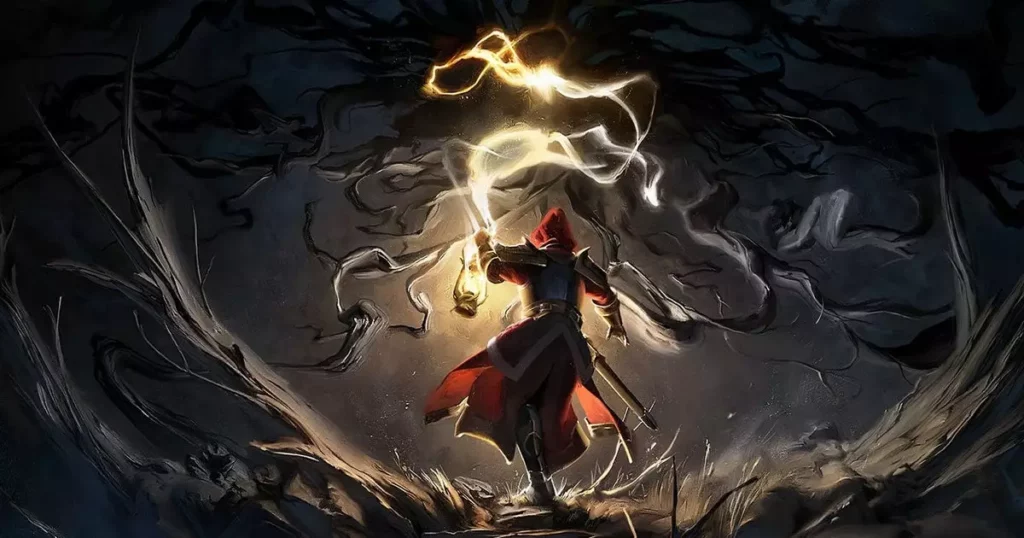In a landscape saturated with dark fantasy games, it’s easy to dismiss newcomers as mere clones of their predecessors. Yet, Mandragora: Whispers of the Witch Tree strives for something more substantial than the typical genre fare. Unlike many side-scrollers that recycle familiar gameplay mechanics and narratives, Mandragora diverges from the beaten path with a narrative that pushes players into unsettling moral territory, rendering it not just another forgettable entry but a potentially groundbreaking experience.
When Mandragora first emerged onto the scene, I, too, was skeptical. The gaming world is rife with titles that boast rich lore and deep mechanics only to fall short of fulfilling their promises. Yet, this title’s ambition stood out to me immediately. It isn’t merely about traversing beautifully rendered environments; it weaves a rich narrative that urges players to grapple with their choices at every juncture, pulling them deeper into its haunting world.
Visuals That Haunt and Captivate
What truly distinguishes Mandragora from its peers lies within its striking visuals. The artistic direction seems to echo elements from classic dark fantasy titles, conjuring memories of the haunting visuals found in Castlevania. This game’s vivid landscapes elevate it beyond mere aesthetics; they serve as a character in their own right, enhancing the atmospheric weight of the narrative.
Characters are designed with an unusual flair that initially strikes as cartoony. However, this sense of quirkiness seamlessly aligns with the game’s darker themes, crafting an otherworldly quality that immerses players in its surrealism. Each twitch and gesture from the characters layers complexity to the gameplay, offering a dramatic contrast to the grim settings that declare this isn’t merely a playground but a world filled with pain and moral ambiguity.
Narrative Depth Over Conventional Plotlines
The rich narrative underpinnings of Mandragora elevate it well beyond its gameplay mechanics. Set against a backdrop dominated by the villainous King Priest—who recalls the malevolence of Disney’s Judge Claude Frollo—players are thrust into a haunting struggle that’s marked by moral ambiguity. The simplistic dichotomy of good vs. evil falls flat when each decision becomes a heavy weight on the player’s conscience, leading to agonizing choices such as whether to end the life of a tortured witch.
This narrative complexity pushes players to experience their decisions’ repercussions, creating a visceral connection to each moment. Instead of merely jumping from one combat sequence to another, players become emotionally invested in the unfolding tale, enriching their gameplay experience in ways that many titles overlook.
Frantic Combat with Strategic Nuance
At surface level, Mandragora’s combat might evoke comparisons to the quick-paced systems in other action RPGs. Yet, beneath the adrenaline-fueled skirmishes lies a strategic depth that requires players to be attuned to more than just reflexes. The stamina management system and skill-based evasion compel players to think critically while immersed in action—not an easy feat.
Character customization options further enrich the gameplay experience, allowing for diverse approaches to encounters. This empowerment translates to greater investment in character development and the unfolding narrative, as players explore varied builds and user-defined play strategies.
While early animations might seem rudimentary, the overall charm only solidifies the emotional engagement promised by the game. It’s clear that developers have placed significant thought into layering combat mechanics with narrative significance, creating a tapestry of interaction that encourages exploration and curiosity.
Soundscapes That Echo Into the Abyss
The atmospheric audio is no afterthought in Mandragora. Each sound, from the crackle of spells to the ominous melodies in the background, features a level of detail that enhances immersion. This conscious effort to produce a soundscape that complements the visual grimness contributes to the unsettling yet captivating experience.
The interplay of sounds and visuals, from haunting melodies to jarring silence, ensures that the game invests players emotionally in its world. Ominous audio elements enrich the artistic vision of Mandragora, crafting an immersive atmosphere that resonates with the game’s themes of despair and hope.
Character Connections in a Fractured World
Mandragora invites players to navigate not just its dark environments but also a rich tapestry of character relations. Even minor interactions—like those with the cynical merchant—transform mundane exchanges into moments rife with depth. These character-driven interactions contribute to a broader conversation about power dynamics and morality, allowing players to resonate with the game beyond simply conquering foes.
In an age where games strive for realism at the expense of engaging narratives, Mandragora sneaks past genre conventions and offers players an emotional journey marked by psychological and ethical quandaries. Such bold storytelling choices elevate the title beyond entertainment, transforming it into an experience that will linger in players’ minds long after they’ve left its haunted world.









Leave a Reply